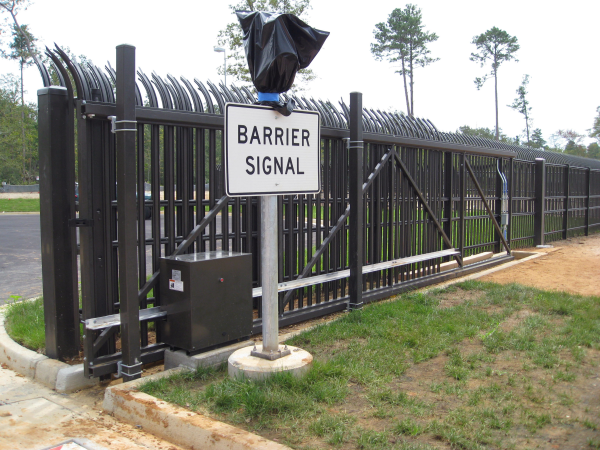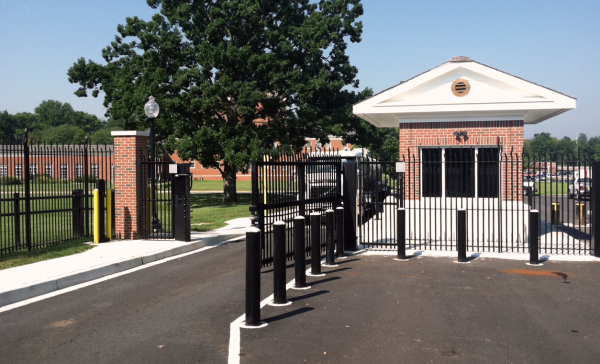 AT/FP Entry Systems or Gate Systems are created by using passive and/or non-passive barriers. These gate access systems are specifically designed to reach a level of protection that the facility mandates. These mandates are found in the projects specification section and are designed by highly qualified engineers.
AT/FP Entry Systems or Gate Systems are created by using passive and/or non-passive barriers. These gate access systems are specifically designed to reach a level of protection that the facility mandates. These mandates are found in the projects specification section and are designed by highly qualified engineers.
Passive Barriers allow the passage of entering vehicles at all times. This can be achieved by placing jersey wall barriers in away that creates a maze for the vehicle to maneuver. This effectively forces the vehicle to slow down while permitting access. This is only one example of this type of passive barrier.
Non-Passive Barriers are actually permanent entry obstacles. These are things like bollards, wedge barricades, drop arms, slide gates and newly designed net systems. These barricades can be used in conjunction with fences and gates or can actually be mounted to fences and gates. They are used more often than passive barriers because they can be moved in and out of their location with ease. This allows instant entry and immediately re-barricaded areas. Pop up bollards and wedge barriers are a favorite among these non-passive barriers for their reliability and relative indestructibility.
To understand the AT/FP entry systems and their requirements, one must also understand the overall perimeter requirements of the system. ATFP passive perimeter security can be accomplished with the use of steel cables or steel guardrails. This can also be setup by any combination of natural and manmade features when natural barriers are not sufficient or present. This can be achieved with ditches and berms, or large bolder (3ft. x 5ft.) placement and forestation. Distance can also be a great ATFP device when used in combination with an uneven or bumpy surface. This will slow down any moving vehicle or a truck bomb that is attempting to implode a building surface. Remember that AT/FP perimeters are specifically intended to stop only vehicle traffic. This perimeter prevents a bomb threat, not theft.
 It is easier to implement the AT/FP standards when working on new construction rather than attempting to retrofit the system into an existing environment. When retrofitting, much of the plan design work will be required to be done onsite and in an emergent way. This can lead to design difficulties and can turn out to be very costly. Conceiving a building or site around AT/FP barrier implements is much easier than situating the AT/FP elements around already existing structures. Imagine attempting to widen the distance between a building and the adjacent road line. It would be simpler to initially plan this rather than propose it at a later point in time.
It is easier to implement the AT/FP standards when working on new construction rather than attempting to retrofit the system into an existing environment. When retrofitting, much of the plan design work will be required to be done onsite and in an emergent way. This can lead to design difficulties and can turn out to be very costly. Conceiving a building or site around AT/FP barrier implements is much easier than situating the AT/FP elements around already existing structures. Imagine attempting to widen the distance between a building and the adjacent road line. It would be simpler to initially plan this rather than propose it at a later point in time.
Another method of obtaining this level of protection is to utilize Engineered K4|K8|K12 Ratings. These engineered barriers have not undergone the Department of State authorized test, but does meet engineering criteria for equivalent levels of protection. Most Non-DOS Certified systems (other than U.S. Army Corp of Engineers USACE or Military Handbook MIL-HDBK specified) will require an engineer stamp indicating compliance assuring the expected level of protection.
Article contributed By Meagan Stone.


